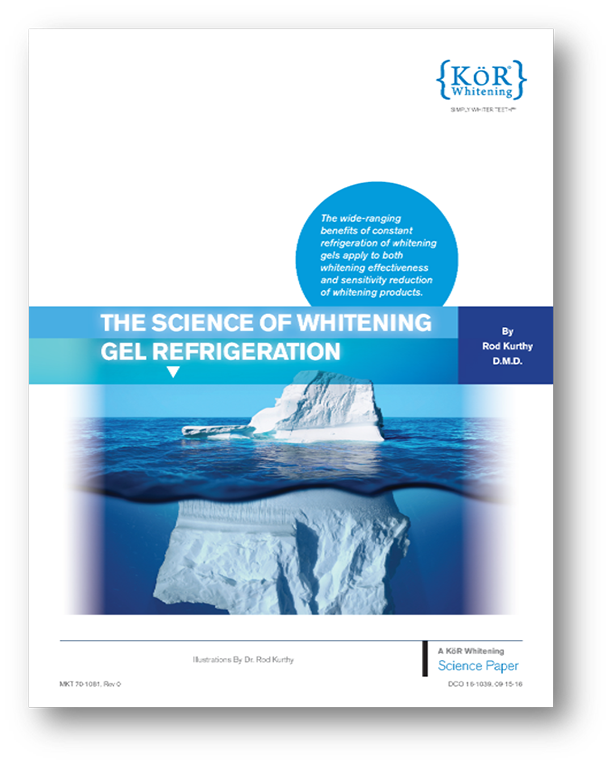At KöR Whitening, we’ve conducted a lot of research on the effects of temperature and handling methods on teeth whitening gels. This research has helped us refine our approach to make sure our gels are delivered with maximum potency and the lowest sensitivity. Take a look!
Avoiding Chemical Breakdown
The simple fact is that all peroxide-based gels are unstable. That is a GOOD thing! The instability allows the chemicals to break down quickly in the mouth. This releases the bleaching factor byproducts that results in teeth whitening.
The challenge with such instability, however, is that all whitening gels will begin degenerating immediately upon manufacture unless they are kept under constant refrigeration. If left at room temperature or exposed to warmer climates and hot shipping temperatures, the peroxide gel will lose potency.
Standard Practices
Most whitening gel manufacturers will store their gels in warehouses, which are usually not air-conditioned, let alone refrigerated. Then, they are shipped in unrefrigerated, warm or hot (temperatures can reach up to 165°) freight trucks to be stored again in other warehouses. Lastly, they are shipped out to dental offices in warm or hot delivery trucks/vans. So, it’s easy to understand why whitening gels lose a lot of potency between the factory and the application by the patient or dentist.
There are some whitening product companies which refrigerate their highest strength power whitening gels during the final shipping stage to dental practices. However, the gels are usually not refrigerated at any storage/delivery point prior to that. To compensate, the manufacturers add chemical stabilizers, such as phosphoric acid, to reduce chemical breakdown, but those also reduce the instability (and thus effectiveness) of the gels. Those same chemical stabilizers also increase the osmolality of the whitening gel by as much as eleven times, greatly increasing sensitivity felt by patients during whitening.
It’s important to understand that there are only two ways to stabilize whitening gels after they are manufactured:
1. Chemical Stabilizers – This includes phosphoric acid and an anhydrous base, which are only partially effective and can hamper how quickly the whitening gels ultimately break down in the mouth, as well as increasing sensitivity.
2. Refrigeration – Constant refrigeration is required throughout every step of manufacturing, shipping, storage, and delivery. This prevents the natural chemical breakdowns over long periods of time and eliminates the need to add chemical stabilizers. Eliminating the need for chemical stabilizers also results in the maximum effectiveness of whitening gels when placed on the teeth, as well as greatly lowering sensitivity felt by patients.
The KöR Whitening Approach to Refrigeration
KöR Whitening is the first whitening gel company that constantly refrigerates a full line of whitening products, starting immediately after manufacture. As soon as the gels are manufactured, they go into cold storage and are kept refrigerated throughout each stage of delivery. Our refrigerated trucks are maintained between 34-36 degrees Fahrenheit. This means that when the dental practice receives the gel, it has retained virtually 100% of its original potency.




